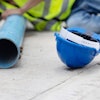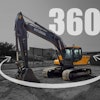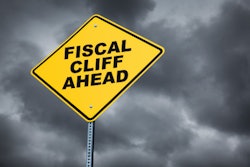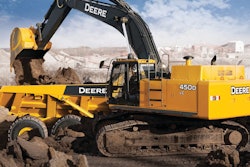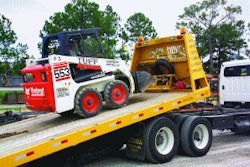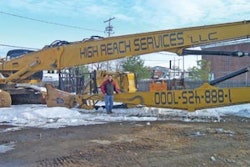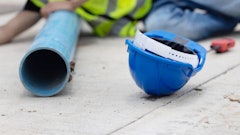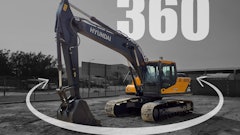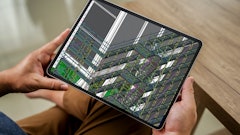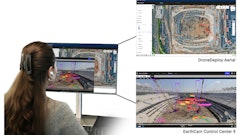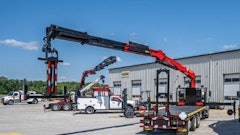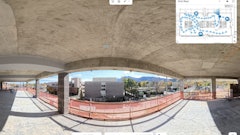It appears it will be another up and down year, depending on where you operate and what industries you cover. Initially, contractors felt it would be better in 2012 and equipment dealers seemed to agree with them. As it turns out, work is not starting as fast as first thought, and many contractors are wondering if things will improve or not.
When you review what market analysts have to say, it appears manufacturers are somewhat cautious ,while dealers think it will be a much better year. In this case, I believe dealers are referring to bottom line profits as opposed to equipment sales. In fact, many dealers I have talked to from around the country stated that 2011 was one of the best years they ever had.
Dealers have had and expect another good year, not from equipment sales, but from their product support and rental activities. It is no secret that the parts, service and rental portions of a dealer's business are substantially more profitable than equipment sales. A dealer may wind up with lower overall sales and still make more profit from product support and rental activities. Just about every dealer I spoke to mentioned that rental has taken on a new dimension within the dealer profit planning model.
Expect to pay more to rent
Increases in rental equipment values, rental rates and both rent-to-sell (RTS) and rent-to-rent (RTR) transactions support the fact that the use of rental by contractors is on the rise and, in general, has become more acceptable as a way to get utility value from a piece of equipment. As such, contractors can expect a couple of things in today's rental market.
The market is much thinner than it was the last four years. Most rental companies sold off under-utilized rental assets, with many sales taking place in 2011. As part of this, the rental companies made sure the units they sold would not show up in a competitor's fleet across the street by selling them overseas, or by taking units to auctions with many foreign buyers.
The decrease in rental units is reflected in used equipment pricing, which has been increasing every month for the last year for just about every type of equipment you would expect to see in a rental fleet. Just so you know, there is a 90% correlation between the increase in equipment value and rental rates. Looking at the value increases, expect to see 10% to 15% rental rate increases compared to what you paid a year before.
Of course, you can always find a piece of junk to rent for a lower rate. But if you want a unit with good uptime and service when you need it, expect to pay the higher rates that are quoted. Any comments referring to last year's rate or a threat to go elsewhere will fall on deaf ears. Many rental companies had to drop their rates close to 40% the past couple of years. They no longer have to do this, because the market has turned around for them due to far fewer units being available.
Because of the building demand for rental equipment, contractors have to accept that:
1. rates will be higher and are not going down any time soon; and
2. delivery and pick-up charge will be higher because of higher fuel costs and, in many cases, union costs.
Follow the rules
Rental is getting more popular because it is more convenient, is less costly and provides more flexibility. Rental can make you more profitable and provide liquidity by avoiding the costs of ownership. As such, it has to be considered if you wish to be competitive.
That said, there are some "Rules of the Rental Road" you should follow to ensure equipment will be available when you need it:
•Equipment should be rented with adequate lead time to process your order. Don't call Monday at 4 p.m. for a 7 a.m. delivery the following day — it ain't going to happen.
•Have your insurance certificate ready to send to the rental company if they do not have it on file. Otherwise, you will pay a 10% to 14% insurance fee.
•Open an account with your top two rental stores. Fill out the credit application and supply a credit card for the first rental.
•Get to know your sales rep from the rental company. Just as important, take some donuts to the rental managers who have to see that your units get to where they are going in a timely fashion.
•Communicate with the rental managers about where to deliver or pick up the equipment and have someone there when the truck arrives.
•Inspect all units upon delivery and note any machine damage. Take a photo if you can. Many of the delivery trucks will have cameras available for this purpose.
•Make sure you know how to operate the equipment. If you do not ask for a qualified rep to come out and do the training and supply cards to your employees showing that they attended the training meeting.
•Make sure you understand how the rentals are calculated. Make the "call off" when you are finished with the unit to keep cost to a minimum.
These rules cover both RTR and RTS transactions. However, you should also have a full understanding of how the RTS conversion is made and how rentals are applied to the unit's purchase price.
As I have mentioned in the past, it's also a good idea to stop in at the rental store to introduce yourself, look over the available equipment and explain your business and the type of equipment you use. This information will be placed in your customer file for future reference.
Follow these rules and your rental experience is more likely to be a positive one.

